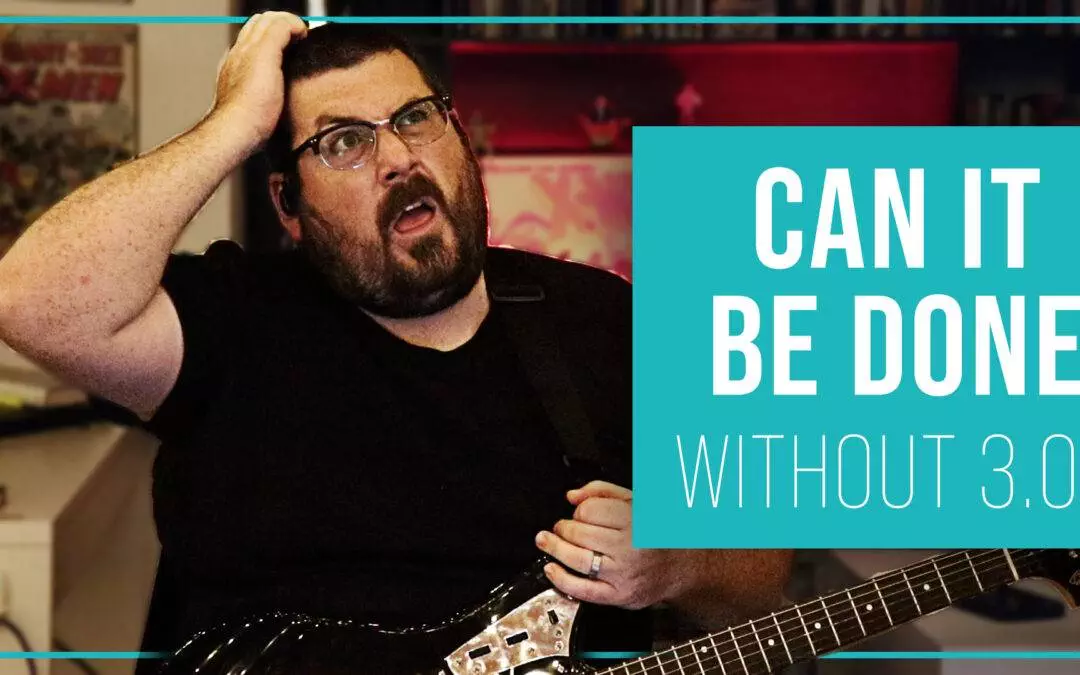SHOULD YOU BUY A HELIX LT?
As a guitarist, you put a lot of research into choosing your new gear – and you should. In the age of boutique pedals, amps, and guitars, accumulating new gear can be extremely costly. But, it the Line 6 Helix LT a suitable replacement for your mountain of gear?
Hopefully this review will help you decide if the LT deserves your hard-earned money.
I’ll be rating the Helix LT in four categories: design, tones, usability, and value. Let’s get started!
DESIGN
Although the Helix LT is considered a “stripped down” version of the original, I personally prefer the Helix LT’s design. It’s a bit smaller and cleaner.
Line 6 made the cleaner design of the LT possible by sacrificing a handful of inputs, their digital scribble strips, and a “headphone” volume knob.
One of the missing inputs on the Helix LT is an XLR input. So if you’re wanting to run a vocal mic through your Helix while simultaneously running your guitar or bass you’ll want to stick with the original.
Not having the extra inputs and scribble strips wasn’t a deal breaker for me. And now that I have owned this unit for a few months, I can definitely say that I have yet to run out of inputs.
One design aspect that cannot be overlooked is the design of the HX Edit software. This is the editing interface for the various Helix products. With its simple, user-friendly design, Line 6 has made it super easy to edit parameters and assign controls. You no longer have to bend down multiple times to tweak and save settings. Just hop into HX Edit make a few adjustments, save and you’re good to go.
One negative aspect of the HX Edit software is that you have to be connected to your Helix via USB. This may not be an issue for you (and maybe I’m being unreasonable) but sometimes I have an idea for a tone and I’m not near my Helix. I would like to be able to use HX Edit as a “scratch pad” for ideas whenever something pops into my head. Then the next time I connect, the software would update the hardware with my latest addition.
Design Rating: 9/10
TONES
One thing Line 6 didn’t sacrifice for the LT’s smaller footprint is the number of available tones. There are a ridiculous amount of sounds/effects available for Helix users to configure and reconfigure endlessly.
But let me start by saying this: I’m not too concerned about sounding like Jimi Hendrix or David Gilmour. I’m not in a cover band and I have no interest in recreating somebody else’s tone. (If that’s your thing, then I’m confident you’ll have loads of fun with a Helix.) Lastly, I’m not worried about how the Helix performs against the amps and effects it’s modeling.
What I do care about is the overall tonal quality. Are the tones useful? Do the presets provide a creative spark to point me in the right direction? Do the sounds I’m hearing inspire me? And lastly, do I lose track of time when I’m jamming with my Helix? The answer to all these questions is a resounding YES!
For me, Line 6 has created the ultimate tone machine. I’ve owned my Helix LT for a few months and still I feel like I haven’t even scratched the surface of what it can do.
The Helix gives me the ability to create tones that I could never achieve with my one amp, three guitars, and pedalboard. For example, one of my first (and favorite) tones I created was my VOX AC 15 1×8 patch. Something I never could have tried because a) I don’t own a Vox AC 15 and b) I don’t own a 1×8” speaker cab. Originally, I was just goofing off trying to pair up a weird amp/speaker combination, but the sound that I ended up hearing was so cool that I decided to turn it into a patch.
One last thing regarding tones is that Line 6 has said they are committed to the Helix platform and they’re continually updating it with new amp models and effects!
Tones Rating: 9.8/10
USABILITY
As I mentioned in the design section, Line 6 put together a very easy to use, intuitive interface for their Helix products. It is super easy to navigate through the various banks of tones and tweak individual parameters.
One thing I didn’t know I would appreciate – mostly because I didn’t know anything about it – is Helix’s dual DSP (Digital Signal Processing). Unlike most audio processors, the Helix allows you to take control of the available DSP and distribute it across multiple signal paths.
Where other effects units would only allow for one distortion, one delay, one modulation effect, one reverb, etc.. the Helix allows you to combine multiple instances of the various effects until you run out of DSP. (This is very useful when it comes to stacking distortions, delays, pitch-shifting effects, etc.)
On the Stage
Before getting my Helix LT, I used an M13 in live settings for about eight years. The biggest adjustment for me has been remembering to save my settings before moving on to a different patch. This of course was due to the M13’s “stompbox” design, where a tweaked setting would stay put even if you changed “scenes.” So if you have to make an adjustment on the fly, you’ll want to make sure you remember to save it before moving on.
Unlike the original Helix, the Helix LT is limited to only eight assignable footswitches to control your various effects, settings, and snapshots. At first, I was a little hesitant about not being able to use all the footswitches for my various settings. But after a few weeks, I’ve been able to be more intentional and creative with how I lay out my patches.
In the Studio
Using the Helix for recording purposes was a huge selling point for me. I had been using an AMPLIFi 150 for the last three years to record guitar tracks but it lacked the ability to be used for re-amping and record one guitar through multiple paths into multiple tracks. Of course, the Helix makes both options available.
If your home studio is less than optimal, the Helix LT is a great solution that will save you so much frustration and time spent running cables and miking up amps.
Usability Rating: 8/10
VALUE
Rating the value of the Helix LT was a little tricky for me. I really do love it and I can’t imagine going back to lugging a giant pedalboard (and amp) from gig to gig. But, at $1,000 some might consider it expensive. That being said, I think it’s definitely worth it! On the other hand, I don’t think $1,500 for the original Helix is worth it.
Also, at their respective price points, I was bummed to find out that neither the Helix or the Helix LT included the Helix Backpack. Nonetheless, I feel that I should give the Helix LT a high value rating because of all that it can do and the quality of sound you’re able to achieve.
Value Rating: 9/10
FINAL THOUGHTS
One thing I chose not to cover in my review is the ability to incorporate IR’s (Impulse Responses). I just haven’t had the time to experiment with them yet. But if that is something that interests you it is an option that is available.
I’m extremely satisfied with my Helix LT, in fact I just sold my main amp and M13 this week (I still have my AMPLIFi for now). If you’re like me and love exploring new sounds and experimenting with different tone combinations then go get yourself a Helix LT now.









Thank you for this! I’ve been a “tube amp & pedal board” guitarist for years, and now with a nagging bulging disc that prevents me from lugging around heavy gear like I use to, this looks like a dream come true! My only hesitation is that one of my favorite pedals I use a lot is the Digitech Trio+ looper, and I’m hoping there’s a way to incorporate that with the Helix LT.
Hey Jeff, thanks for stopping by! Lots of folks are using external pedals to complement their various Helix products. It’s super easy to do with the Send/Return block (essentially an FX loop). You can drop this in anywhere in your signal chain—before an amp block, after, in between delay and reverbs, or on a separate path altogether. IF that’s the only thing keeping you from getting one, let me be the first to say, “Welcome to the Family” ??
Which speaker do you use, sth like a headrush frfr?
Hi, would the effects loop of the LT take a POG? Cheers, Neil.
Well that answers my question. I got the pod go for portability but it doesn’t seam you can stack the same pedals or effect type. so this is the answer. Unless you know if the pod go can, cease I just wanted to throw it in my suit case. thx
Been looking at these and the Go definitely has some limitations in multiple effects processing power. It’s been said they wanted some separation in performance between the Go and helix.
Hey great review, and im still playing catch up – one thing i did notice between all the different helix footpedal line is the standard list effects. Unless im wrong the hx stomp for example has way more (including legacy effects) than the LT? Does that mean you cant get those on the LT? Have I misunderstood? Also can you create a freeze effect on these? Thanks 🙂
The HX Stomp, the Helix and LT all have exactly the same software and amps, effects etc. The Stomp is limited to a chain of 8.
Is it possible to still use a mic for vocals along with Guitar effects in Helix LT ? I know its lacking the mic input slot but is there a hack ?